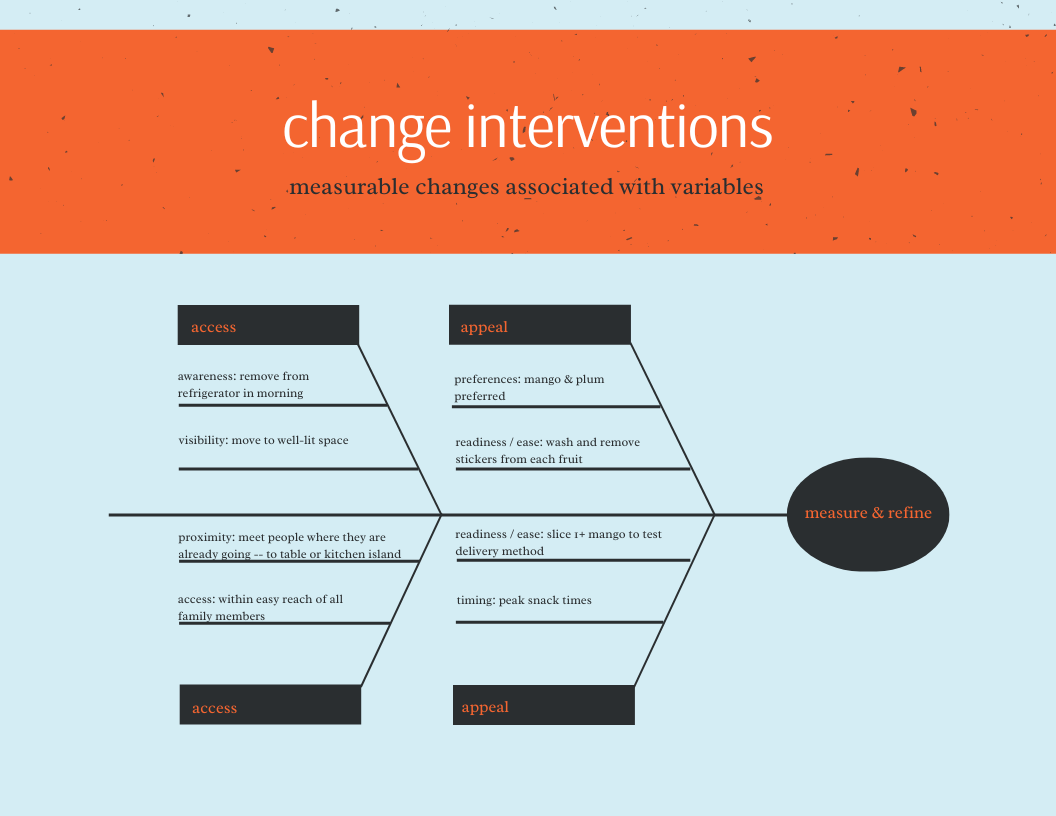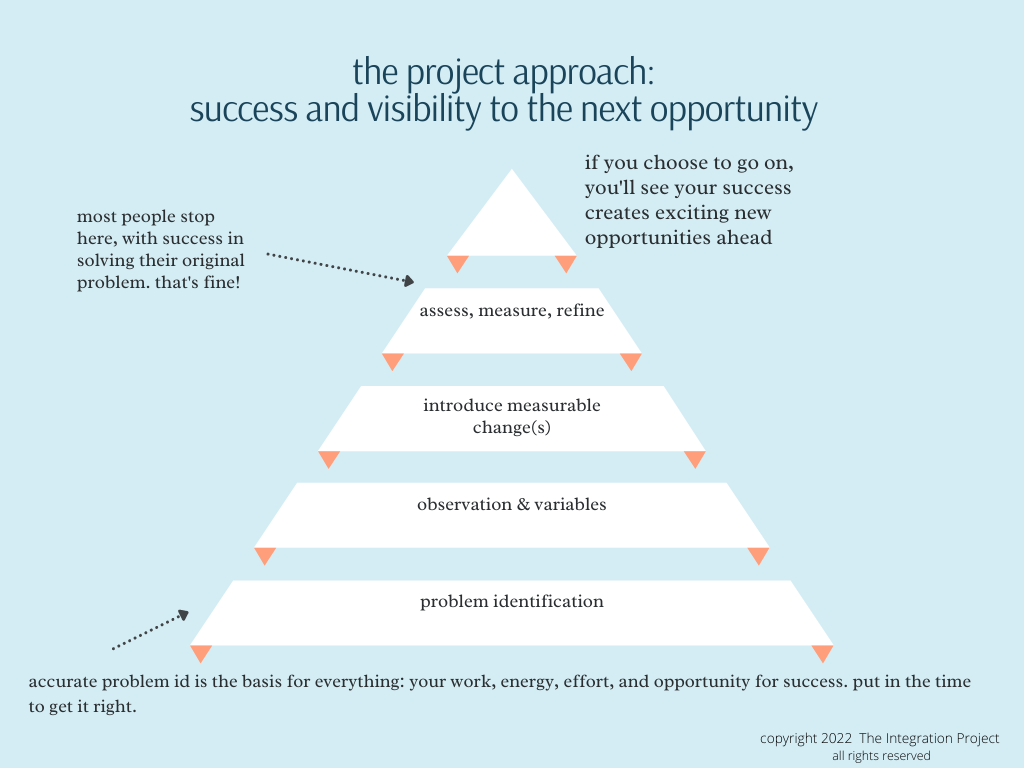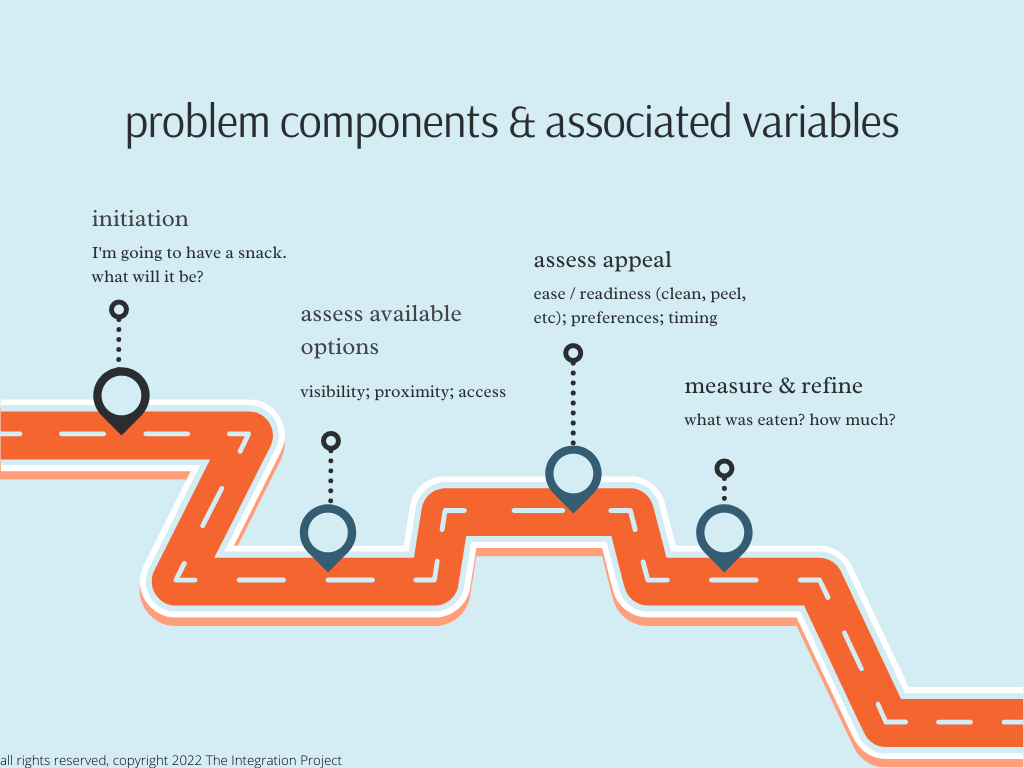the project approach - what it is & how it can improve your life, starting tomorrow
(shhh! It's easier than you may think!)
Hey — in this newsletter, 3 Big Things:
What’s the project approach & how can I use it?
How does it deliver?
What will it change & how will I know?
I’m going to take a project approach to explaining the project approach and its benefits. Allow me to manifest it as a diagram:
1st Big Thing: What is the project approach?
The Project Approach is a systematic way to create more opportunities in your life, using the proven methods business consultants use to solve complex problems every day.
This issue will walk through a straightforward, real-life example, showing how you can begin to benefit from the Project Approach at work and at home, today.
2nd Big Thing: How does it deliver?
Practically speaking it breaks down into the steps you see illustrated above. Our graphic resembles railroad tracks — an apt if accidental metaphor illustrating the potential for progress. Let’s get moving with an example:
Problem Identification.
This is the most important step: imprecise or mis-identification here will waste time, and your time and attention are your most precious resources. Problem identification can be simple: your problem can be any result you don’t like — remember a result is an observable, measurable outcome and probably involves other people (emotional outcomes are not what we’re talking about here, though of course they matter). What do you want to turn out differently (goal)?
An example: problem: My family eats too much junk food — salty, sweet, or processed foods. Goal: I’d like them to eat more fresh fruit as snacks.
Observation & Variables.
Remember that problems unfold over time. Each problem is a little like a widget coming off an old-fashioned manufacturing assembly line. It undergoes a process that shapes it into a problem. Each step in this process — transactions or decision points in the critical path of the problem — is an opportunity for intervention and course correction.
In our example I am examining only controllable variables, variables I can change without messing other stuff up. The earliest possible point of intervention is in assess available options. Visibility, proximity, and access are the controllable variables: is the fruit in good light so that people can see it? can people reach it? Never underestimate the impact of even simple variables — if I can’t see something, I have no practical access to it and cannot choose to eat it.
The Project Approach is so effective for problem-solving because it’s direct and stripped-down: it focuses your attention only on those points of the critical path that you can do something about.
The Project Approach isn’t speculative. It’s about observing problems playing out in real time and making material changes that will alter the outcome in the way you desire. It gives you a way to take informed action — the Project Approach is built to solve real, observable problems through systematic actions.
3rd Big Thing: What will it change and how will I know?
Opportunities for impact are in the inflection points — where decisions are made, information is handed off, or possibilities are removed from consideration. Each of those points is a transaction in some observable or measurable way. Introduce change at the most meaningful point — usually as early as possible in the process — and observe and assess the effects of your change.

On your first pass, throw everything you’ve got at your problem. If you can replace the bad outcome with one you like better, you’ll be able to relax and fine-tune for efficiency, cost, timing, etc. For instance, in this example, moving all our dials to 11 means putting more effort in than one might like — slicing and chopping mangoes so they’re more appealing for spur-of-the-moment snacking. Maybe it’s necessary and maybe it isn’t.
Identifying how you’ll measure each variable you change gives you useful decision-making information. In our example, if we want to determine the necessity of chopping mango, we need to ensure we have a test we can read: unchopped mango that is otherwise identical (prepped, position, etc.). Did any get eaten when the chopped was also offered? How much or how little? If the chopped mango is removed, how much is eaten then? Is it enough?
Answers to questions like those will allow for continuing refinement in your approach to this problem.
A Project Approach will also help inform the most … fruitful … avenues for future exploration. If these methods work with fruit, might they also be useful with vegetables? With a desirable pattern of behavior that doesn’t involve eating?
What this method does is give you a system for making practical, fast, clear, measurable changes. Give it a shot & report back, or fire off questions.




